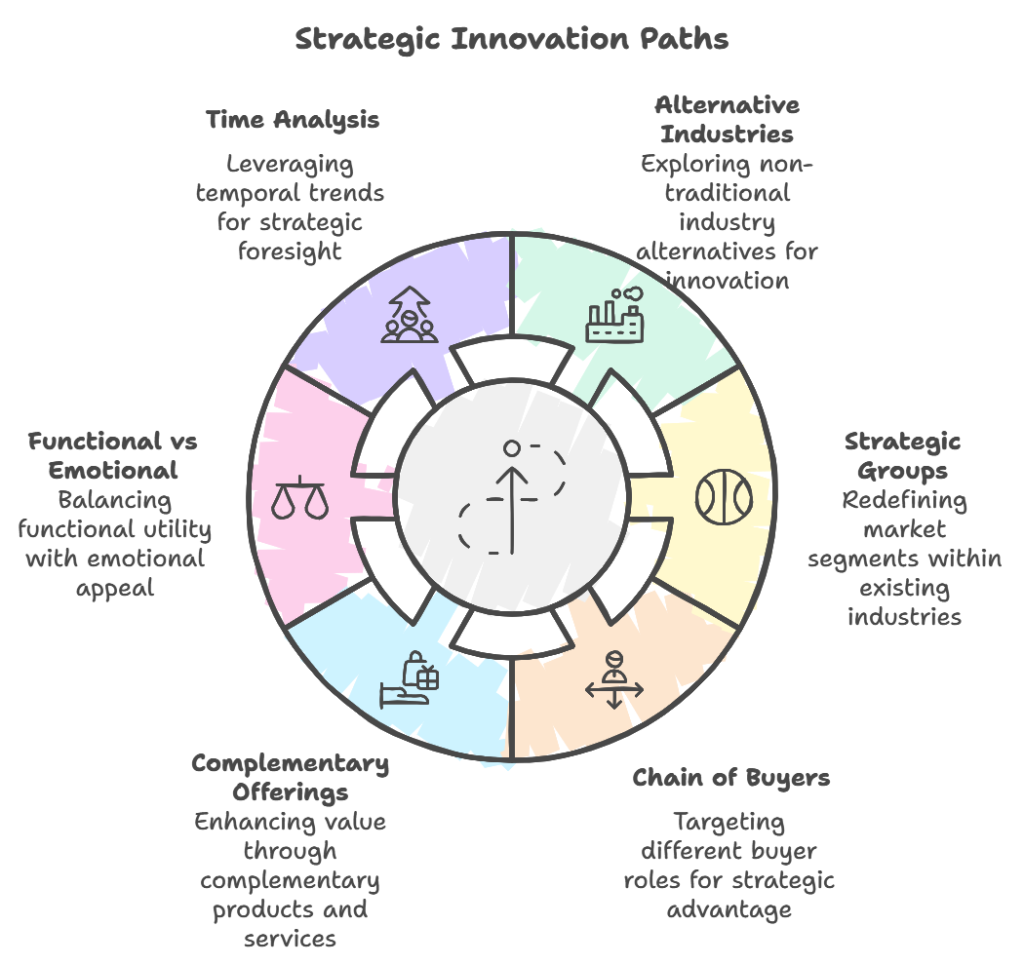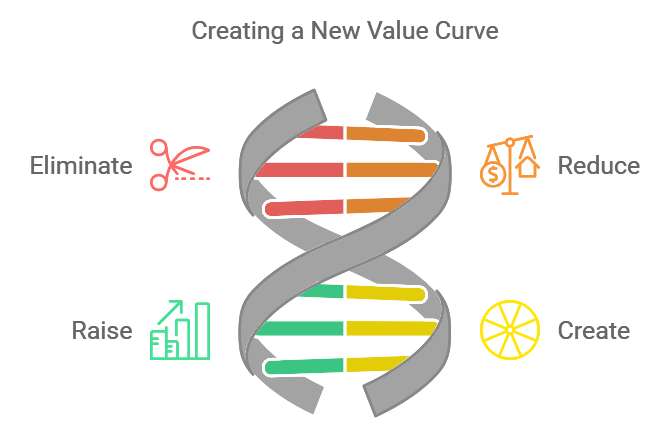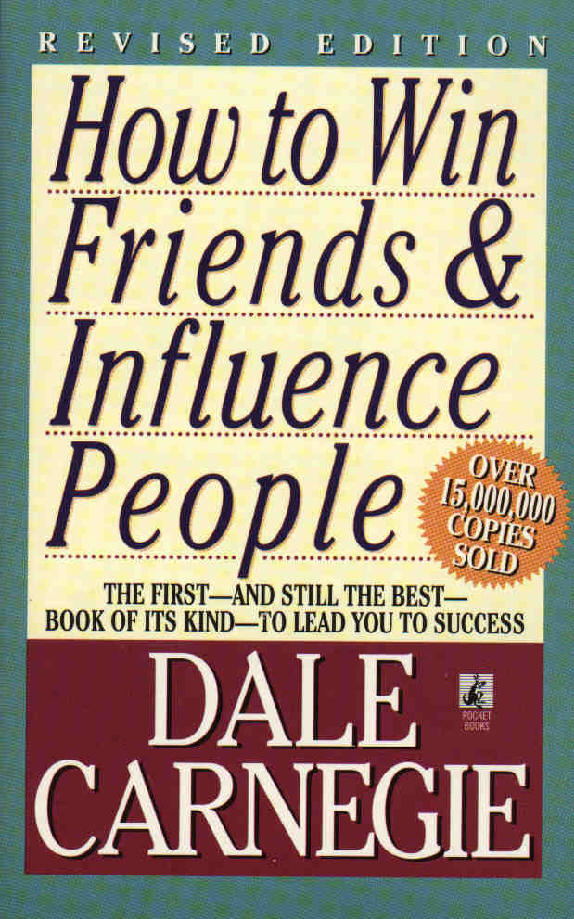Table of Contents
In this free Blue Ocean book summary, we examine the key strategies, ideas and concepts presented in the iconic book, “Blue Ocean Strategy: How to Create Uncontested Market Space and Make the Competition Irrelevant“.
Blue Ocean Strategy is a strategic framework developed by W. Chan Kim and Renée Mauborgne that encourages businesses to move beyond the competitive, red ocean markets to create new, uncontested market spaces, referred to as blue oceans.
The Book in Three Sentences
- The majority of companies focus on competing in existing market space (red oceans) where competition is fierce and profit margins are shrinking. This leads to a focus on incremental improvements and battles over market share within established industry boundaries.
- To achieve sustainable growth, companies need to shift their focus from competing in red oceans to creating new, uncontested market space (blue oceans). This involves breaking free from the constraints of existing industries and creating new demand by offering a leap in value for customers.
- Blue ocean strategy provides a systematic framework for creating and capturing blue oceans, encompassing six key principles that guide the formulation and execution of this approach. These principles challenge conventional strategic thinking and help companies move beyond incremental improvements to achieve differentiation and low cost simultaneously.
“Value innovation is the cornerstone of blue ocean strategy.”
Red Oceans vs. Blue Oceans
The book begins by contrasting the red and blue ocean metaphors. Red oceans represent all the industries in existence today; the known market space. In red oceans, companies compete fiercely for a greater share of existing demand, leading to cutthroat competition and shrinking profit margins.
Blue oceans, on the other hand, denote untapped market spaces, representing industries not in existence today. These uncontested market spaces offer opportunities for rapid growth and high profitability because the rules of the game are yet to be set.
While the book acknowledges the importance of competing in existing markets, it argues that in today’s business landscape, where supply often exceeds demand, creating blue oceans is essential for sustained high performance.
Value Innovation: The Cornerstone of Blue Ocean Strategy
The cornerstone of blue ocean strategy is value innovation, the simultaneous pursuit of differentiation and low cost. Value innovation involves creating a leap in value for both the company and its buyers. It achieves this by:
- Eliminating and reducing factors an industry competes on that no longer add value for buyers.
- Raising and creating elements the industry has never offered that unlock exceptional utility for buyers.
Value innovation shifts the strategic focus from outcompeting rivals to creating new demand and rendering competition irrelevant. It challenges the traditional trade-off between differentiation and low cost by pursuing both simultaneously.
“Red oceans are all the industries in existence today – the known market space. Blue oceans denote all the industries not in existence today – the unknown market space.”
Six Paths to Creating Blue Oceans
The book presents a framework of six paths to help companies systematically create uncontested market spaces:

- Look Across Alternative Industries: This path encourages companies to consider alternatives that customers choose instead of their industry’s offerings. For example, NetJets looked across fractional aircraft ownership and commercial airline travel to create its innovative business model.
- Look Across Strategic Groups Within Industries: Companies should look across different price/performance levels within their industry. For example, Curves redefined the fitness club experience by focusing on affordability and convenience, attracting women who were intimidated by traditional gyms.
- Look Across the Chain of Buyers: Companies should consider the entire chain of buyers, including purchasers, users, and influencers, and explore opportunities to shift the focus to a different buyer group. For example, Bloomberg targeted users instead of purchasers, creating a revolutionary financial information platform for traders and analysts.
- Look Across Complementary Product and Service Offerings: This path involves exploring opportunities to enhance the value of a product or service by considering complementary offerings. For example, Borders and Barnes & Noble transformed bookstores into destinations for intellectual exploration by incorporating coffee shops and lounges.
- Look Across Functional or Emotional Appeal to Buyers: Companies should challenge the industry’s conventional functional-emotional orientation. For example, Cemex shifted the focus from functional utility to emotional appeal, transforming cement sales into a social good.
- Look Across Time: Companies should analyze trends over time and project their impact on customer needs and value propositions.
“To win in the future, companies must stop competing with each other…The only way to beat the competition is to stop trying to beat the competition.”
Four Actions to Create a New Value Curve

The book introduces the four actions framework as a tool to reconstruct buyer value elements and create a new value curve:
- Eliminate: Identify factors that an industry takes for granted that can be eliminated.
- Reduce: Determine factors that can be reduced well below the industry standard.
- Raise: Discover factors that should be raised well above the industry standard.
- Create: Identify new factors that the industry has never offered.
By acting on all four actions, companies can create a new value curve that diverges from the competition and unlocks a blue ocean.
Strategy Canvas: Visualizing the Competitive Landscape
The strategy canvas is a central tool in blue ocean strategy. It provides a visual representation of the competitive landscape, highlighting:
- The factors an industry competes on and invests in.
- The offering level buyers receive across these factors.
- The strategic profiles (value curves) of competitors.
The strategy canvas helps companies understand the current state of play in their industry and identify opportunities for creating blue oceans.
A Four-Step Process for Strategic Planning
The book suggests a four-step process for strategic planning that emphasizes visual thinking and the creation of blue oceans:
- Visual Awakening: Draw the company’s and competitors’ value curves to highlight the need for a strategic shift.
- Visual Exploration: Conduct field observations to understand the experiences of customers and noncustomers.
- Visual Strategy Fair: Generate and present multiple blue ocean strategy ideas, each represented by a distinct value curve.
- Visual Communication: Communicate the chosen strategy using the strategy canvas to align the organization.
Reaching Beyond Existing Demand
To maximize the size of the blue ocean, companies must reach beyond existing demand by:
- Focusing on noncustomers: Instead of fighting for a greater share of existing customers, identify and target noncustomers who are not currently served by the industry.
- Identifying commonalities: Focus on the commonalities in what buyers value, rather than catering to finer segmentation and customization.
- Desegmenting the market: Challenge traditional market segmentation and seek to aggregate demand by targeting broader customer groups.
The Strategic Sequence: Ensuring Commercial Viability
The book emphasizes the importance of the strategic sequence in formulating a blue ocean strategy:

- Buyer Utility: The offering must unlock exceptional utility for buyers, providing a compelling reason to buy it.
- Price: The price must be strategically set to attract the mass of target buyers.
- Cost: The company must be able to produce the offering at a target cost that allows for profitability at the strategic price.
- Adoption: The company must address potential adoption hurdles upfront.
By following this sequence and ensuring that each criterion is met, companies can mitigate business model risk and create a sustainable blue ocean strategy.
Executing Blue Ocean Strategy: Overcoming Organizational Hurdles
The book addresses the challenges of executing blue ocean strategy, highlighting four key organizational hurdles:
- Cognitive Hurdle: Overcoming organizational inertia and resistance to change.
- Resource Hurdle: Executing the strategy with limited resources.
- Motivational Hurdle: Inspiring and motivating employees to embrace the new strategy.
- Political Hurdle: Navigating organizational politics and resistance from vested interests.
Tipping Point Leadership
The book introduces the concept of tipping point leadership to address these hurdles. Tipping point leadership focuses on:
- Concentrating efforts: Instead of trying to change the entire organization, identify and focus on people, acts, and activities that exercise disproportionate influence.
- Making people see the need for change: Use compelling experiences, rather than abstract data, to drive awareness.
- Multiplying the value of resources: Focus on maximizing the impact of existing resources instead of solely seeking more.
- Motivating key influencers: Target and motivate key influencers who can drive change throughout the organization.
- Building execution into strategy: Use fair process to foster trust, commitment, and voluntary cooperation in strategy execution.
“The aim of blue ocean strategy is not to outperform the competition in the existing industry, but to create new market space or a blue ocean, thereby making the competition irrelevant.”
Conclusion: The Sustainability of Blue Ocean Strategy
The book concludes by discussing the sustainability of blue ocean strategy. It argues that blue ocean strategies are often difficult to imitate due to:
- Value Innovation: The combination of exceptional utility, strategic pricing, and target costing creates a strong barrier to imitation.
- Organizational Change: Imitating a blue ocean strategy often requires significant organizational changes that are difficult to implement quickly.
- Brand Buzz: Value innovators often generate strong brand buzz and customer loyalty, making it difficult for imitators to gain traction.
However, the book stresses the importance of continued value innovation to sustain a blue ocean strategy over time. As competitors eventually enter the blue ocean, companies must continue to innovate and create new value to remain ahead of the game.
Takeaways
Blue Ocean Strategy provides a compelling framework for navigating the complexities of the modern business world. It challenges conventional strategic thinking and encourages companies to break free from the limitations of existing markets to create new opportunities for growth and profitability.
By understanding and applying the principles and tools presented in the book, businesses can chart a course towards uncontested market spaces and achieve sustained success.
Real-Life Examples Illustrating the Blue Ocean Strategy Approach
- Yellow Tail Wine: The authors use the example of Yellow Tail, an Australian wine, to illustrate how a company can create a blue ocean by breaking away from the conventions of its industry. The U.S. wine industry was highly competitive, with complex terminology and an emphasis on prestige that alienated many potential customers. Casella Wines, the creator of Yellow Tail, challenged these conventions by creating a wine that was easy to drink, fun, and approachable. They eliminated the complex terminology, reduced the emphasis on tannins and oak, raised the level of fruitiness and softness, and created a simple, eye-catching label. By doing so, Yellow Tail appealed to a broader audience, including those who traditionally preferred beer or cocktails, thus creating a new market space.
- Cirque du Soleil: Cirque du Soleil is another example of a company that created a blue ocean by redefining its industry. The traditional circus industry was struggling with declining audiences and rising costs. Cirque du Soleil eliminated costly elements like animal acts and star performers, reduced the emphasis on thrills and danger, raised the level of artistry and sophistication, and created a unique theatrical experience with original music and storylines. This new value proposition appealed to a new audience—adults and theatergoers—who were willing to pay a premium price, allowing Cirque du Soleil to achieve both differentiation and low cost.
- Bloomberg: Bloomberg, the financial information and media company, created a blue ocean by challenging the conventions of the financial data industry. At the time, financial data was primarily accessed through expensive terminals leased to large institutions. Bloomberg recognized the unmet needs of individual traders and analysts who needed real-time data and analytics. They created a user-friendly terminal with intuitive functions, providing access to a vast amount of financial data and analytics at a price point accessible to individual professionals. This value innovation allowed Bloomberg to capture a new market segment and become a dominant player in the industry.
- NetJets: NetJets, a fractional aircraft ownership company, created a blue ocean by bridging the gap between commercial airline travel and full aircraft ownership. Commercial airlines offered affordability but lacked flexibility and convenience, while full aircraft ownership was prohibitively expensive for most individuals and businesses. NetJets offered a solution that combined the benefits of both alternatives: fractional ownership allowed customers to purchase shares in a private jet, giving them access to on-demand private air travel at a fraction of the cost of full ownership.
Chapter Summaries
Part 1: Blue Ocean Strategy
Chapter 1: Creating Blue Oceans
This chapter introduces the concept of blue ocean strategy. It contrasts red oceans, or known market spaces where industries are already well-defined and competition is intense, with blue oceans, or unknown market spaces where demand is created rather than fought over.
Key takeaways:
- Companies can achieve sustainable high performance by creating blue oceans.
- The majority of business launches are line extensions in existing markets, resulting in less revenue and profit compared to blue ocean launches.
- Value innovation is the cornerstone of blue ocean strategy, requiring a simultaneous pursuit of differentiation and low cost.
- The six principles of blue ocean strategy provide a framework for creating and capturing blue oceans, and they mitigate risks in the process.
Chapter 2: Analytical Tools and Frameworks
The authors introduce tools for visualizing strategy and understanding the dynamics of blue oceans.
Key takeaways:
- Strategy Canvas: A visual tool that captures the current state of play in a market, highlighting the factors that the industry competes on and the level of investment in each factor.
- Four Actions Framework: Challenges companies to consider eliminating, reducing, raising, and creating factors of competition to break free from the red ocean.
- Eliminate-Reduce-Raise-Create Grid: A tool for visualizing and planning strategic moves. This process helps companies find ways to lower costs while increasing buyer value.
- Value Curve: A graphic depiction of a company’s relative performance across the industry’s key success factors. A strong value curve is focused, divergent, and has a compelling tagline.
Part 2: Formulating Blue Ocean Strategy
Chapter 3: Reconstruct Market Boundaries
This chapter challenges companies to look beyond traditional industry boundaries to unlock new value. It outlines six paths to reconstruct market boundaries.
Key takeaways:
- Look Across Alternative Industries: Consider why customers choose alternative products or services over those in your industry.
- Look Across Strategic Groups Within Industries: Explore the factors that lead customers to trade up or down within an industry.
- Look Across the Chain of Buyers: Consider shifting the focus from purchasers to users or influencers.
- Look Across Complementary Product and Service Offerings: Identify pain points in the total solution buyers seek and offer complementary products or services to eliminate them.
- Look Across Functional or Emotional Appeal to Buyers: Challenge the conventional wisdom about whether your industry competes on functionality or emotion and consider flipping the focus.
- Look Across Time: Anticipate and adapt to trends that affect your business, shaping your blue ocean before the trend makes its full impact.
Chapter 4: Focus on the Big Picture, Not the Numbers
This chapter outlines how to reorient the strategic planning process around the big picture.
Key takeaways:
- Visual Awakening: Recognizing the need for strategic change by comparing the company’s current strategy to that of competitors.
- Visual Exploration: Going into the field to observe customers, noncustomers, and competitors to gain insights into how to create new value.
- Visual Strategy Fair: Generating and testing a range of potential blue ocean strategies, using visual tools to promote clarity and engagement.
- Visual Communication: Communicating the new strategy clearly and effectively to the entire organization using visual tools.
- Pioneer-Migrator-Settler (PMS) Map: Categorizes businesses as pioneers (high growth potential), migrators (moderate growth potential), or settlers (low growth potential). Companies should strive to shift their portfolios toward pioneers for sustainable growth.
Chapter 5: Reach Beyond Existing Demand
This chapter encourages companies to focus on noncustomers rather than solely concentrating on existing customers to maximize the size of the blue ocean.
Key takeaways:
- Three Tiers of Noncustomers:
- First tier: Noncustomers on the edge of your market, who minimally purchase your industry’s offerings.
- Second tier: Noncustomers who refuse to use your industry’s offerings.
- Third tier: Noncustomers in distant markets who have never considered your industry’s offerings.
- By understanding the reasons why noncustomers don’t buy and focusing on the commonalities in their needs and wants, companies can unlock and aggregate new demand.
Chapter 6: Get the Strategic Sequence Right
This chapter lays out a strategic sequence to reduce business model risk.
Key takeaways:
- Buyer Utility: Ensure that the new offering provides exceptional utility to buyers, solving their biggest problems or pain points.
- Strategic Pricing: Set a price that is accessible to the mass of buyers while ensuring profitability.
- Price Corridor of the Mass: Helps companies determine the right strategic price by considering the price and volume of alternative products and services.
- Target Costing: Focus on achieving a cost structure that allows for profitability at the strategic price.
- Adoption: Address any potential hurdles to adoption, including engaging stakeholders (employees, partners, and the public) and communicating the value of the new strategy.
Part 3: Executing Blue Ocean Strategy
Chapter 7: Overcome Key Organizational Hurdles
This chapter emphasizes that successful execution of blue ocean strategy involves overcoming organizational hurdles. It introduces tipping point leadership, which focuses on making a strategic shift quickly and cost-effectively.
Key takeaways:
- Cognitive Hurdle: Break through employees’ ingrained assumptions and help them see the need for change.
- Ride the “Electric Sewer”: Make employees confront the worst operational problems to create a sense of urgency.
- Meet with Disgruntled Customers: Expose employees to customers who have had negative experiences with the company.
- Resource Hurdle: Secure and reallocate resources quickly and efficiently.
- Hot Spots: Focus resources on activities that have the biggest impact on performance.
- Cold Spots: Redirect resources from activities that have little impact on performance.
- Horse Trading: Negotiate and trade resources with other departments or units to maximize their value.
- Motivational Hurdle: Inspire and motivate employees to embrace the new strategy.
- Kingpins: Identify and motivate key influencers in the organization.
- Fishbowl Management: Make performance transparent and accountable to drive motivation.
- Atomization: Break down overwhelming strategic challenges into smaller, more manageable steps.
- Political Hurdle: Overcome internal and external resistance to change.
- Consigliere: Seek advice from a politically savvy and respected insider.
- Leverage Angels and Silence Devils: Build coalitions with natural allies and neutralize those who oppose the change.
Chapter 8: Build Execution into Strategy
This chapter focuses on the role of fair process in motivating employees and ensuring successful execution of a blue ocean strategy.
Key takeaways:
- Fair Process: Involving employees in the strategy-making process, explaining decisions clearly, and setting clear expectations.
- Three E Principles of Fair Process:
- Engagement: Involve people in the strategic decisions that affect them.
- Explanation: Explain the rationale behind strategic decisions to build trust and understanding.
- Expectation Clarity: Set clear expectations of what is expected of people and how they will be evaluated.
- Fair process enhances trust, commitment, and voluntary cooperation.
Chapter 9: Conclusion: The Sustainability and Renewal of Blue Ocean Strategy
The authors argue that the sustainability and renewal of blue ocean strategy depend on continued value innovation.
Key takeaways:
- Blue ocean strategies are not static; they need to be monitored and renewed over time to maintain their competitive advantage.
- Imitation is inevitable, but companies can create barriers to imitation by building brand equity, creating economies of scale, and patenting their innovations.
- Continuous monitoring of the value curve is essential to identify when a blue ocean is turning red, signaling the need for a new value innovation.
Appendices
Appendix A: A Sketch of the Historical Pattern of Blue Ocean Creation
Offers a brief historical analysis of the evolution of the automobile, computer, and movie theater industries in the United States, highlighting examples of blue ocean creation.
Appendix B: Value Innovation: A Detailed Look at the Dynamics
Further explores the dynamics of value innovation by applying the four actions framework to different types of strategic moves.
Appendix C: The Market Dynamics of Value Innovation
Explains how value innovation creates a win-win scenario for buyers, companies, and society, leading to a virtuous cycle of market expansion and growth.

Liked this Blue Ocean book summary? Read other book summaries here
You may also like:








Leave a Reply to 22 Immutable Laws Book Summary | Key Principles of Marketing Cancel reply